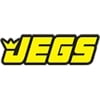| Ratings |
|---|
| Price |
| Brand |
Electronic Ignition Control Units
JEGS 555-40805 Ignition Control Unit Features:
- Modern electronics with mopar oem appearance
- Comparable to the mopar chrome ignition control unit
- Electrical connector on control unit plugs into all mopar oem and mopar performance wiring harnesses
- Made in usa with high quality components and assembly
- Replacement wiring harness and ballast resistor available separately to repair or upgrade your vehicle’s ignition system
JEGS 555-40805 Ignition Control Unit Notes:
- Case must be grounded. Be sure mounting location (firewall, bracket, or fender apron) is free of rust & paint (sand or wire brush as required) before mounting Ignition Control Unit. Make sure the mounting screws are tight and use Serrated-head screws or external-tooth lock washers to mount the Ignition Control Unit.
- Coat connector pins with silicone grease. Be sure wiring connector retaining screw is present and snug.
- Plugs into all Mopar OEM, JEGS, and Mopar Performance wiring harnesses, whether the harness or vehicle was designed for 4 or 5-pin Ignition Control Units. No modifications required.
- Use with ballast resister. Works with 2-Pin or 4-Pin ballast resistors. Use without ballast resistor will destroy the Ignition Control Unit.
- Use with OEM or OEM-Spec (oil filled) ignition coil. E-Frame coils are also acceptable. High Performance Coil 555-40105 is also recommended. Coils made for C-D ignitions (MSD, etc) may destroy the Ignition Control Unit. Coil Primary resistance should be no lower than 1.4O
- Pre-startup test (recommended for vehicles that has experienced Ignition Control Failure). Connect a voltmeter between the coil positive (+) and a good ground. Turn ignition key to "run" position. Voltmeter should read between 7.0 and 9.0 volts. If higher turn ignition key off immediately and check ballast resister (resistance - too low 0.5O minimum, 1.0O recommended for most street applications), ballast wiring, shorted coil, ignition switch wiring, etc.
- Quick Wiring Check - Disconnect either ballast connector at idle. Engine should stall instantly.
Specifications:
Can this be used in a daily driver LA318 without overheating issues?
So is this compatible with a MSD Blaster 2 coil?
Motor Vehicles
WARNING: Motor vehicles contain fuel, oils and fluids, battery posts, terminals and related accessories which contain lead and lead compounds and other chemicals known to the State of California to cause cancer, birth defects and other reproductive harm. These chemicals are found in vehicles, vehicle parts and accessories, both new and as replacements. When being serviced, these vehicles generate used oil, waste fluids, grease, fumes and particulates, all known to the State of California to cause cancer, birth defects, and reproductive harm.
Tools:
WARNING: Some dust created by power sanding, sawing, grinding, drilling, and other construction activities contains chemicals known to the State of California to cause cancer and birth defects or other reproductive harm. Some examples of these chemicals are: lead from lead-based paints, crystalline silica from bricks and cement and other masonry products, and arsenic and chromium from chemically treated lumber. Your risk from exposure to these chemicals varies, depending on how often you do this type of work. To reduce your exposure, work in a well-ventilated area and with approved safety equipment, such as dust masks that are specially designed to filter out microscopic particles.
Electrical Cords
WARNING: The wires of these products contain chemicals known to the State of California to cause cancer and birth defects or other reproductive harm. Wash hands after handling.

![Blue Ignition Control Unit [7,500 RPM] Blue Ignition Control Unit [7,500 RPM]](http://www.jegs.com/images/photos/500/555/555-40805.jpg)




